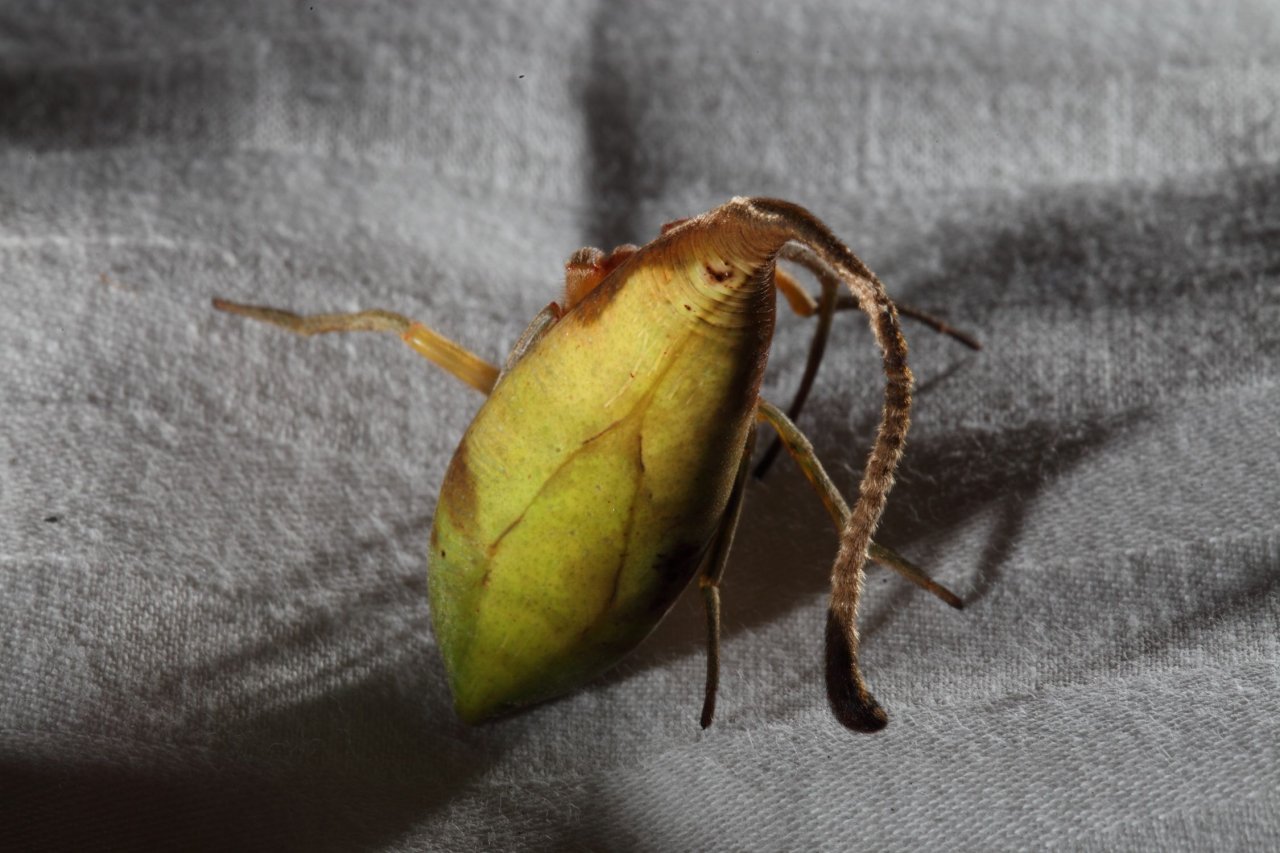On an evening trek through the tropical forests of southern China, researcher Matjaz Kuntner and colleagues spied a strand of spider silk from which a row of leaves oddly dangled. Being biologists, they inspected, shining their flashlights on the curious sight. Then one of the leaves moved.
"Looking closer, we realized that one of them was not a leaf, it was a spider," says Kuntner, an arachnologist at the Research Center of the Slovenian Academy of Science and Arts, currently on a Fulbright scholarship at the Smithsonian Institution in Washington, D.C. "I was shocked."
Many species of insects, like katydids and walking sticks, resemble leaves, but this is the first arachnid known to look like foliage. This form of mimicry, in which animals camouflage themselves as uninteresting (and inedible) objects to evade predators, is known as masquerade.
The spider, which Kuntner and colleagues describe in a study published last month in the Journal of Arachnology, has a remarkable shape and color pattern. On its top, it resembles fresh greenery, while its bottom is brown and speckled and looks like a wilted leaf.
Related: This new millipede species with 414 legs and 200 poison glands
The researchers subsequently searched the area for more specimens but found only a single juvenile. The creature is in the genus Poltys, a group of orb-weaving spiders that live in China and produce distinctive circular webs. Since they couldn't find any other leaf mimics, the scientists haven't yet given it a species designation.
The spider is nocturnal and spends its days doing its best leaf impression. It may be able to select leaves with hues similar to its own body, allowing it to camouflage itself more effectively, Kuntner says. The tactic likely helps it avoid becoming dinner for animals that eat spiders, such as wasps and birds. At night, however, it weaves an orb-shaped web to catch prey.
It isn't the first spider to engage in masquerade. Several species are known to resemble flowers, dead twigs, plant detritus or bark. One particularly inventive species in Australia bears an uncanny resemblance to avian feces and is appropriately known as the bird-dropping spider (Celaenia excavata).
"This study provides a great example of the boundless opportunities for scientific discovery available to those observant individuals [who] embrace and explore the natural world around them," says Eileen Hebets, a researcher who studies spiders at the University of Nebraska-Lincoln but wasn't involved in the paper. "There is still a lot about our natural world that remains unknown to us, and slowing down and simply taking the time to observe can lead to significant discoveries.
Read more from Newsweek.com:
- New tarantula species named after Gabriel García Márquez
- Widely used pesticides are causing huge spider mite outbreaks
- The first nationwide map of the many insects that live in our houses






















